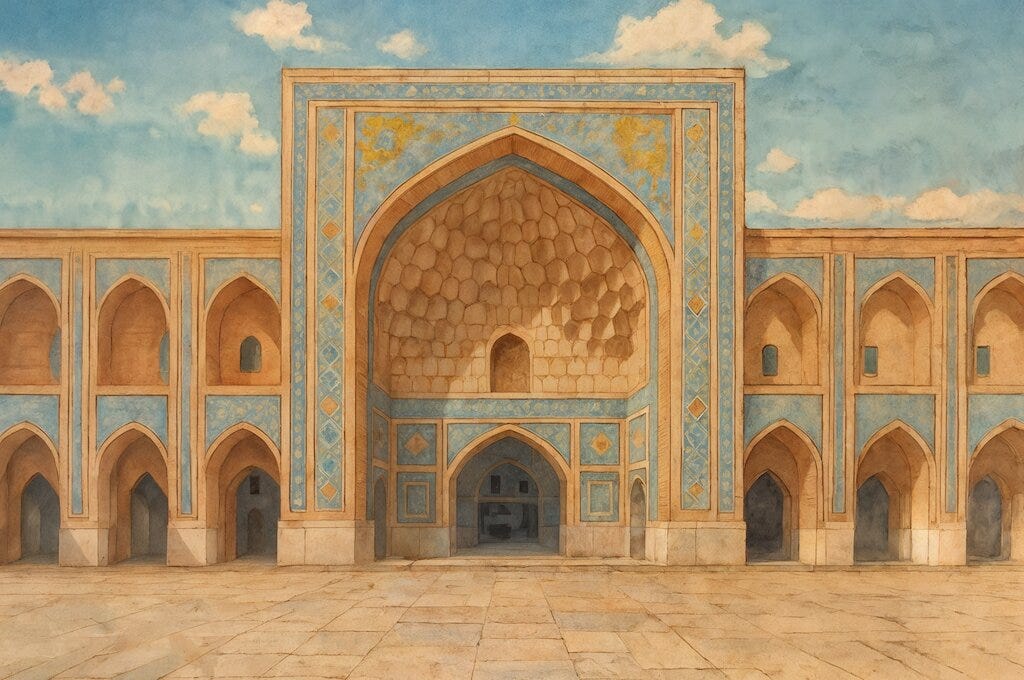Imam Khamenei Calls for a Pioneering and Outstanding Hawza: Vision for the Next Century of the Qom Seminary
In a message to the 100th anniversary conference of the Qom Hawza, Iran’s Supreme Leader outlines the Seminary’s historic role, present challenges, and future mission in shaping Islamic civilisation.
In a message delivered to the international conference commemorating the 100th anniversary of the reestablishment of the Islamic Seminary of Qom (Hawza Ilmiyya), Imam Khamenei, the Leader of the Islamic Revolution, reflected on the Seminary’s historic journey and set forth a vision for its future. He emphasized that the Hawza must become a “pioneering and outstanding” institution—one that is innovative, dynamic, and responsive to the evolving needs of society, while remaining rooted in its spiritual and revolutionary identity.
Imam Khamenei began by recalling the turbulent era of the early 20th century, when Ayatollah Haj Sheikh Abdulkarim Haeri reestablished the Qom Hawza. He highlighted the Seminary’s pivotal role in nurturing figures like Imam Khomeini, whose leadership helped overthrow the Pahlavi monarchy and establish Islamic governance in Iran.
The Leader stressed that the Hawza is not merely a center for religious study, but a comprehensive institution with educational, social, and political responsibilities. He outlined five key areas that define a “pioneering and outstanding” Hawza:
He described the Hawza as a repository of a millennium of Shia scholarship, tasked with addressing contemporary issues in Islamic governance, jurisprudence, and society. The Seminary, he said, must provide answers to questions about the relationship between government and people, justice, international relations, and the principles of Islamic statehood.
Imam Khamenei underscored the Hawza’s duty of “balagh mubin” (clear propagation), which involves training pious and competent individuals to communicate Islamic teachings effectively. He noted a gap between current propagational efforts and the realities faced by today’s youth, urging the Hawza to modernise its methods and better engage with society.
He called for the preservation and strengthening of the Hawza’s “jihadi identity”—its commitment to intellectual, political, and social struggle. He warned against tendencies that seek to separate religion from public life, emphasising that true religious sanctity is realised through active engagement in society’s affairs.
Imam Khamenei highlighted the Hawza’s responsibility to help design and clarify systems of social governance. He argued that Islamic jurisprudence should not be confined to personal rituals but must address the broader needs of nation-building, requiring collaboration with universities and awareness of global developments.
He envisioned the Hawza as a driver of civilisational innovation, laying the groundwork for a new Islamic civilisation that prioritises justice, public welfare, scientific progress, and spiritual growth—standing in contrast to what he described as the “distorted materialist civilisation” of the modern world.
Imam Khamenei also praised the current vitality of the Qom Hawza, citing its thousands of teachers, researchers, and students, its global outreach, and its initiatives such as women’s seminaries. He concluded with recommendations for the Seminary’s future: staying up-to-date, prioritising the training of capable individuals, strengthening ties with the public, countering negative influences, and fostering a spirit of piety, independence, and readiness for struggle.
Through this message, Imam Khamenei called on the Qom Hawza to embrace its historic mission and lead the way in shaping the intellectual, social, and spiritual future of the Islamic world.


